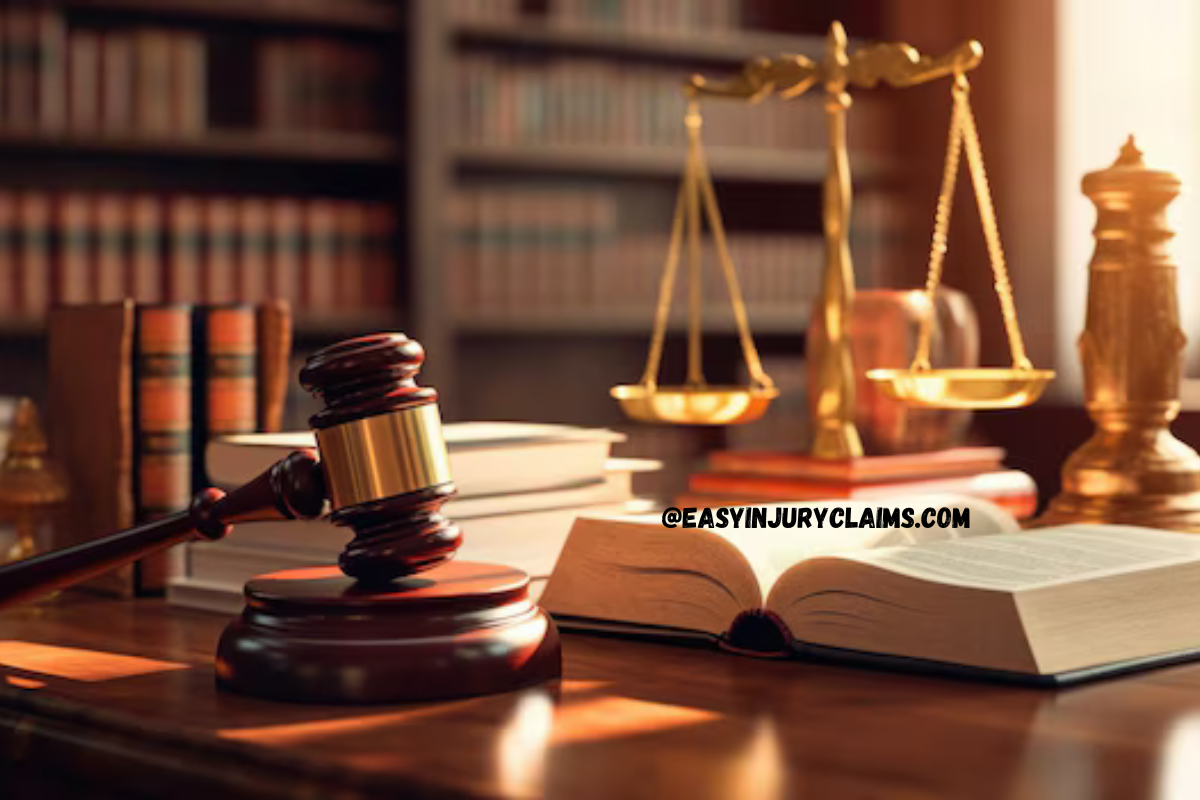Introduction to Law
Definition and Importance
Law is a system of rules created by governments to guide how people should behave. Law helps maintain order and protect people’s rights. It makes sure everyone follows the same rules. Without law, there would be confusion and unfair treatment.
The Role of Law in Society
Law plays a key role in society. It ensures that people act fairly and safely. Law helps solve disputes and punish those who break the rules. It also provides protection and support for people in various situations. In society, law helps to create a stable environment where people can live and work peacefully.
Types of Law
Criminal Law: Overview and Examples
Criminal Law deals with crimes and their punishments. It focuses on actions that are harmful to society. For example, theft, assault, and murder fall under criminal law. If someone breaks these laws, they can face penalties like fines or imprisonment.
Civil Law: Overview and Examples
Civil Law handles disputes between individuals or organizations. It does not involve criminal actions but focuses on resolving conflicts and compensating victims. Examples include disputes over contracts, property, or family matters like divorce. If someone sues another person or business for damages, it is often under civil law.
Administrative Law: Overview and Examples
Administrative Law governs how government agencies operate. It includes rules and regulations that agencies must follow. For example, if a government agency decides to deny a license or permit, administrative law helps ensure that the decision is fair and legal. It also covers how agencies make and enforce rules.
Constitutional Law: Overview and Examples
Constitutional Law involves the principles and rules set out in a country’s constitution. It defines the powers of the government and the rights of individuals. For example, in the United States, constitutional law includes rights like freedom of speech and the right to a fair trial. It helps ensure that laws and government actions follow the constitution.
International Law: Overview and Examples
International Law deals with rules that govern relations between countries. It covers agreements and treaties between nations. For example, international law includes rules on how countries should handle trade, human rights, and conflicts. It aims to maintain peace and cooperation on a global scale.
Branches of Law
Family Law: Divorce, Child Custody, etc.
Family Law deals with issues related to family relationships. This includes divorce, where a couple legally ends their marriage. Family law also covers child custody disputes, which determine who will take care of children after a separation. It handles matters like adoption and child support as well.
Contract Law: Formation, Breach, and Remedies
Contract Law focuses on agreements between people or businesses. Contract Law ensures that when parties agree on terms, those terms are enforceable. It covers formation, which is how contracts are created. If someone does not follow the agreement, it is a breach of contract. Contract Law also provides remedies or solutions, such as compensation for losses caused by the breach.
Property Law: Real Estate and Intellectual Property
Property Law involves rules about ownership and use of property. This includes real estate, which is land and buildings. Property Law also covers intellectual property, such as patents, trademarks, and copyrights. These rules protect the rights of creators and owners of new ideas and inventions.
Employment Law: Workers’ Rights and Employment Contracts
Employment Law focuses on the relationship between employers and employees. It protects workers’ rights, such as fair wages, safe working conditions, and the right to join a union. Employment Law also involves employment contracts, which outline the terms of work, including duties, salary, and benefits.
Law and Legal Processes
The Court System: Structure and Function
The court system is a set of institutions where legal disputes are resolved. It usually includes various levels of courts, such as trial courts, appellate courts, and supreme courts. Courts hear cases, evaluate evidence, and make decisions based on the law. The court system helps ensure that justice is served by providing a structured way to resolve legal issues.
Legal Procedures: Filing Lawsuits, Trials, and Appeals
Legal Procedures are the steps followed in the legal process. This includes filing lawsuits, where a person or organization formally brings a case to court. Trials are where the case is presented and decided. If a party disagrees with the trial decision, they can appeal to a higher court for review. Legal procedures ensure that cases are handled fairly and in accordance with the law.
Legal Representation: Roles of Lawyers, Judges, and Legal Assistants
Legal Representation involves different professionals who help in legal matters. Lawyers represent clients in court, provide legal advice, and prepare legal documents. Judges oversee court proceedings, make rulings on cases, and ensure that trials are conducted fairly. Legal Assistants support lawyers and judges by managing case files, conducting research, and performing administrative tasks.
Legal Rights and Responsibilities
Human Rights: Fundamental Freedoms and Protections
Human Rights are basic freedoms and protections that everyone is entitled to, regardless of where they live. These include the right to free speech, the right to a fair trial, and protection from discrimination. Human rights ensure that people are treated with dignity and respect.
Consumer Rights: Protections Against Fraud and Unfair Practices
Consumer Rights protect individuals when buying goods or services. This includes the right to be informed about products, the right to safe products, and protection against false advertising. Consumer rights help ensure that businesses act fairly and that consumers are not cheated.
Criminal Rights: Rights of the Accused and Victims
Criminal Rights include protections for people accused of crimes and for victims of crime. For the accused, this includes the right to a fair trial and the right to remain silent. For victims, it includes the right to be informed about the case and to receive support. Criminal rights aim to balance the needs of justice with fairness for all parties involved.
Legal Profession
Becoming a Lawyer: Education and Licensing Requirements
To become a lawyer, one must complete several steps. First, education is required, which usually includes earning a bachelor’s degree and then a law degree from a law school. After that, candidates must pass a licensing exam to practice law. Each state or country may have specific requirements for licensing.
Specializations: Different Areas of Legal Practice
Lawyers can choose different specializations based on their interests. These include criminal law, family law, corporate law, and intellectual property law. Each area requires different knowledge and skills. Specializing allows lawyers to become experts in particular fields of legal practice.
Challenges and Opportunities: Trends and Issues in the Legal Field
The legal profession faces various challenges and opportunities. Trends include the growing use of technology in law, such as legal research tools and case management software. Challenges might involve managing large caseloads or adapting to changes in legal regulations. Opportunities include new areas of practice and evolving roles in the legal field.
Current Trends in Law
Technology and Law: Impact of Technology on Legal Practice
Technology is changing how legal practice works. It provides tools for legal research, case management, and client communication. Technology helps lawyers work more efficiently and access information quickly. However, it also brings new challenges, such as data security concerns.
Legal Reforms: Recent Changes and Future Directions
Legal Reforms involve updating and changing laws to address new issues and improve the legal system. Recent legal reforms may include changes to criminal justice procedures or updates to family law. Looking ahead, legal reforms aim to make the law more effective and responsive to current needs.
Global Legal Issues: International Legal Challenges and Solutions
Global Legal Issues involve challenges that cross national borders. These can include international trade disputes, human rights issues, and environmental regulations. Solutions often involve international agreements and cooperation between countries. Addressing global legal issues requires understanding and collaboration on a worldwide scale.
Resources for Legal Information
Legal Research: Tools and Techniques
Legal Research involves finding and using information related to the law. Tools include online databases, legal journals, and case law repositories. Techniques involve searching for relevant cases, statutes, and legal precedents. Legal research helps lawyers build strong cases and provide accurate advice.
Legal Aid and Services: Access to Legal Help
Legal Aid and Services provide support to people who cannot afford legal representation. This includes free or low-cost services for individuals in need. Legal aid ensures that everyone has access to legal help, regardless of their financial situation.
Educational Resources: Books, Online Courses, and Professional Organizations
Educational Resources help individuals learn more about the law. This includes books on various legal topics, online courses that offer flexible learning, and professional organizations that provide training and networking opportunities. These resources support the ongoing education of those in the legal field and those interested in learning more about the law.
Conclusion
In this article, we explored the law and its various aspects. We covered different types of law, such as criminal law, civil law, and administrative law. We also looked at branches of law, including family law, contract law, and property law. The court system and legal procedures were discussed to understand how legal cases are handled. Additionally, we reviewed legal rights and responsibilities, legal professions, and current trends in law. Resources for legal information were also highlighted.
The future of law is likely to be shaped by several emerging trends. Technology will continue to impact legal practice, making processes more efficient and accessible. Legal reforms will adapt to new challenges and needs, improving the legal system. Global legal issues will require international cooperation and innovative solutions. As these trends develop, the legal profession will evolve, presenting new opportunities and addressing emerging issues.
FAQs
Q. What is the purpose of law?
Law serves to maintain order, protect rights, and ensure justice in society. It sets rules for behavior, resolves disputes, and provides penalties for breaking the rules.
Q. What are the main types of law?
The main types of law include criminal law (deals with crimes and punishments), civil law (handles disputes between individuals or organizations), administrative law (regulates government agencies), constitutional law (based on a country’s constitution), and international law (governs relations between countries).
Q. What are the key branches of law?
Branches of law include family law (covers issues like divorce and child custody), contract law (focuses on agreements and breaches), property law (deals with real estate and intellectual property), and employment law (addresses workers’ rights and employment contracts).
Q. How does the court system work?
The court system consists of various levels of courts, including trial courts, appellate courts, and supreme courts. It handles cases, evaluates evidence, and makes decisions based on the law. The system ensures that justice is administered fairly.
Q. What is involved in legal procedures?
Legal procedures include filing lawsuits, participating in trials, and making appeals. These procedures outline how cases are presented, reviewed, and decided.
Q. What roles do lawyers, judges, and legal assistants play?
Lawyers represent clients, provide legal advice, and prepare documents. Judges oversee court proceedings and make rulings. Legal assistants support by managing case files and performing administrative tasks.
Q. What are some current trends in law?
Current trends in law include the increasing use of technology in legal practice, ongoing legal reforms to address new challenges, and the need to address global legal issues through international cooperation.
Q. How can I access legal information?
Legal information can be accessed through legal research tools like online databases, legal aid and services for those in need of assistance, and educational resources such as books, online courses, and professional organizations.
Dive into the world of Law with Easy Injury Claims. Visit our website to uncover endless inspiration!












Got a Questions?
Find us on Socials or Contact us and we’ll get back to you as soon as possible.